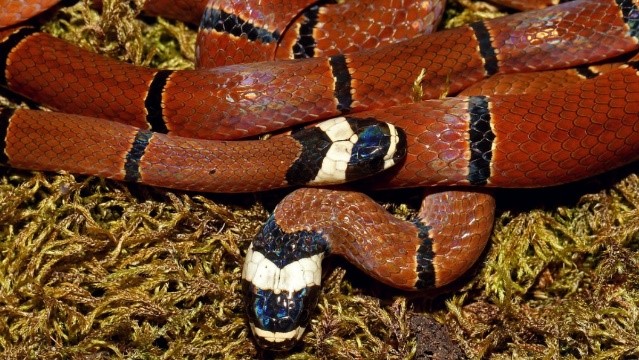





Disclaimer: Copyright infringement not intended.
Context
Details
Coral Snakes
Scientific Classification:
Habitat:
Characteristics:
Venom:
Behavior and Diet:
Conservation Status:
Importance in Ecosystem:
|
PRACTICE QUESTION Question: The discovery of Sinomicrurus gorei, a new species of coral snake, was made by researchers from Mizoram University. What local cultural element played a role in the identification of this snake, and what specific features were considered in confirming its status as a distinct species? a) Named after a local deity, with its identification based on traditional folklore. b) Recognized as "Rul Thi Hna" due to its resemblance to a traditional amber necklace, with confirmation based on unique patterns, scales, DNA, and skull characteristics. c) Associated with a significant river in the region, with confirmation based on its ecological preferences. d) Identified through its venom characteristics and their role in traditional medicine. The correct answer is: b) Recognized as "Rul Thi Hna" due to its resemblance to a traditional amber necklace, with confirmation based on unique patterns, scales, DNA, and skull characteristics. |









© 2025 iasgyan. All right reserved